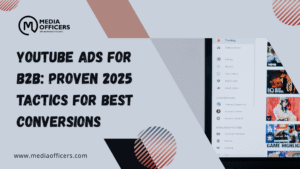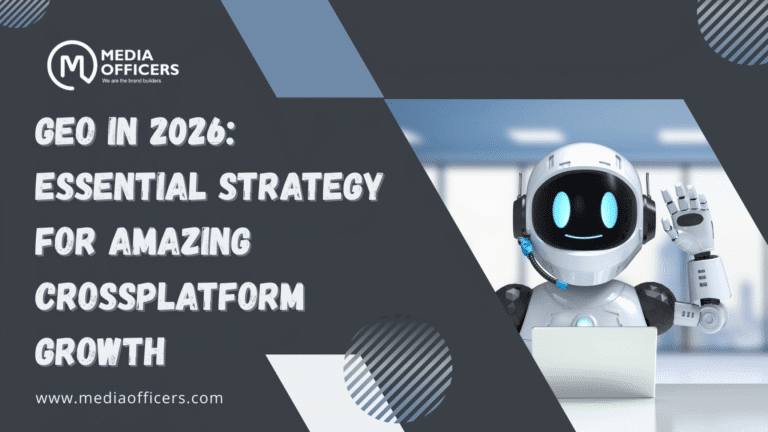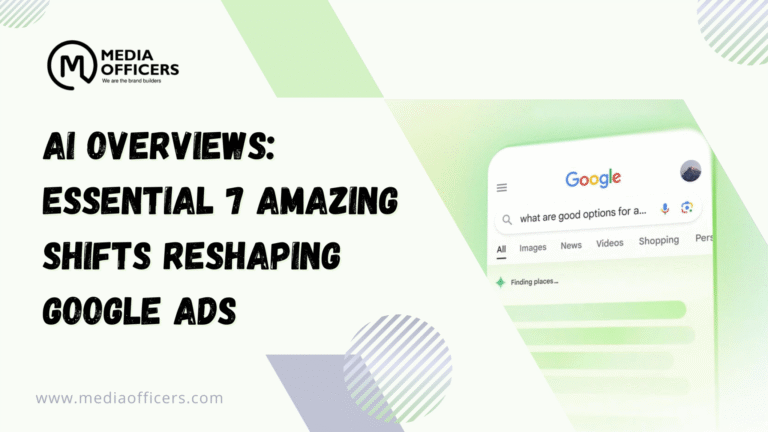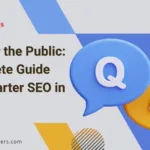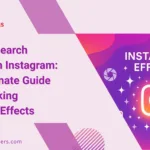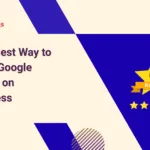YouTube Ads for B2B are more than vanity metrics; they can drive meaningful demand across long sales cycles when paired with the right targeting and creative strategy. This guide shows how to make YouTube ad campaigns work for B2B brands, blending education with reach to support demand gen and lead generation over time. By applying a structured approach, B2B teams can leverage YouTube as a powerful top of funnel channel that complements search and outbound efforts.
Why YouTube Ads for B2B Matter in 2025
Most people default to consumer-centric case studies when thinking about YouTube ads, but YouTube Ads for B2B deliver a different kind of value. In B2B buying, decisions are influenced by credible content, clear use cases, and evidence of ROI. Short videos that quickly articulate value propositions can seed awareness, while subsequent search and retargeting close the loop.
Beyond awareness, the real strength of YouTube Ads for B2B lies in demand generation. When a video explains a solution’s business impact, it helps align buyers with your brand just as they begin to evaluate options. The upshot: better on-site engagement, more qualified traffic, and lower cost per lead over time as search campaigns become more efficient.
Two lessons from real-world campaigns illustrate this well. First, enterprise B2B SaaS brands saw improved click-through and lower cost per lead when video clarified each solution’s value. Second, a local B2B advertiser found that pausing video reduced brand search performance, then reintroducing video plus demand-gen campaigns restored and even improved brand metrics. Taken together, these cases reinforce that YouTube Ads for B2B are most effective when integrated with search and demand-gen signals rather than viewed in isolation.
Case Studies: How YouTube Ads for B2B Drive Results
Case Study 1: Enterprise B2B SaaS Advertiser
In this scenario, an enterprise B2B SaaS client offered multiple business solutions. Paid search was a strong lead source, but two solutions struggled with high cost per lead due to limited awareness. We deployed YouTube video campaigns designed to clearly explain each solution’s value. The impact was measurable across key front-end and back-end metrics.
- CTR improved after the video campaigns launched, indicating better audience understanding of the solutions.
- CPC declined for search campaigns, driven by higher relevance and improved intent signals from video viewers.
- Cost per lead dropped by 30% for the first solution when video ran in parallel with search.
- For the second solution, CPL still decreased by 25% and conversion rate more than doubled, despite higher search competition and rising CPCs in that space.
The takeaway is clear: YouTube Ads for B2B can educate buyers about specific solutions, reducing friction in subsequent search and driving more efficient conversions over time. This is a textbook example of how demand gen on YouTube can influence direct performance in paid search.
Case Study 2: Local B2B Business
A smaller, local B2B firm launched a short video campaign in early 2025 aimed at consideration. They used a Maximize Conversions bid strategy but initially failed to generate leads. When they paused video, CPLs across the account rose by nearly half, and brand search metrics suffered. After restarting video in combination with Demand Gen, brand CPLs dropped dramatically and overall brand search performance recovered to previous levels.
- Restarting YouTube ads helped restore brand search CPLs to prior levels.
- Adding a Demand Gen campaign alongside YouTube improved brand-related performance by up to 47% in CPL terms.
- Direct conversions from YouTube and Demand Gen remained modest, but the indirect lift on brand search and overall funnel efficiency was clear.
This case proves that YouTube Ads for B2B can have a material indirect impact on brand-related search metrics, which in turn supports long-tail funnel performance. It also highlights that strategic sequencing and test-and-learn can help you discover the right mix for your local market.
Keys to Impactful YouTube Campaigns for B2B
Across both cases, a few practices consistently drove success for YouTube Ads for B2B. Implementing these best practices can help your own campaigns deliver better demand gen outcomes and stronger search synergies.
- Use custom segments built from high performing search keywords. Avoid broad targeting unless you have a very large awareness budget. Custom keyword segments tend to perform best for B2B demand gen, especially when combined with lookalike audiences if you have first-party data.
- Geo-targeting matters. For local B2B, focus on the most relevant markets. For global campaigns, be precise about country selection to avoid wasted spend.
- Keep videos short. 15–30 seconds is ideal for B2B where attention spans are limited and messages must be clear quickly. Include your brand name and logo in the first few seconds.
- Use a target CPV bid strategy. Aiming for cost-per-view below a penny helped maximize audience reach while staying cost-efficient.
- Leverage multiple videos. A library of 3, 4, or more videos reduces fatigue and helps test different value propositions and creative angles.
- Respect budget discipline. In both examples, video ads consumed less than 5% of total budgets, yet produced outsized benefits in other channels.
When you combine these practices with disciplined measurement, you’ll often observe improved search performance and enhanced overall funnel efficiency. The synergy between YouTube Ads for B2B and search or CRM-based marketing is the real engine of growth in modern B2B advertising.
Strategic Execution: Step by Step for YouTube Ads for B2B
- Analyze search intent and keywords. Identify a primary focus keyword for your B2B topic and select 3–4 supporting LSIs that align with buyer needs and business outcomes.
- Craft core SEO elements for content and ads. Create a persuasive title and description that reflect the primary keyword while ensuring a strong value proposition for B2B buyers.
- Build compelling video assets. Produce short, on-brand videos that clearly articulate value, use cases, and measurable outcomes relevant to decision-makers.
- Target with precision. Use custom keyword segments and lookalike audiences derived from first-party data; keep geo targeting tight for local campaigns.
- Set a CPV oriented bid strategy. Prioritize cost-effective views to maximize reach without inflating spend.
- Launch a multi-video campaign. Test variations to reduce fatigue and identify the most persuasive messages for your audience.
- Integrate with demand-gen and search. Ensure you have both YouTube and search campaigns running in tandem to amplify intent signals and capture increased interest.
- Measure and optimize. Track front-end metrics like CTR and CPV, and back-end metrics like CPL and conversion rate. Adjust creative and targeting based on data.
This structured approach helps you get the most from YouTube Ads for B2B, creating a feedback loop between video views, demand generation, and search performance.
Measuring Success: KPIs for YouTube Ads for B2B
To prove the value of YouTube Ads for B2B, focus on a balanced mix of engagement and downstream conversions. While direct leads from video are valuable, the broader impact on funnel performance often manifests in improved search efficiency and lower CPLs over time.
- Engagement metrics: CTR, view-through rate, and average watch time help you understand whether your creative resonates with B2B buyers.
- Efficiency metrics: CPV for video views, CPC for clicks, and CPL for leads in paid search show the cost efficiency of your blended strategy.
- Attribution and lift: Use multi-touch attribution or incremental lift studies to quantify how video contributes to other channels, especially search and CRM-driven campaigns.
- Brand impact: For many B2B brands, the strongest lift is seen in brand search and direct visits, driven by broader awareness from YouTube ads.
With a disciplined measurement plan, YouTube Ads for B2B become a lever not just for awareness but for sustainable demand generation that compounds over time.
Frequently Asked Questions
Can YouTube Ads for B2B directly generate leads, or is it mostly top-of-funnel?
YouTube Ads for B2B rarely generate a large number of direct leads in a single video. They excel at building awareness, clarifying value, and priming audiences for easier conversion in search and landing pages. The strongest results come from a blended strategy that links video with demand-gen campaigns and search.
What is the ideal video length for YouTube Ads for B2B?
Short videos, typically 15–30 seconds, perform well for B2B audiences when they clearly convey the value proposition upfront. If you have complex products, you can run slightly longer assets (up to 60 seconds) for deeper value storytelling, but start short and test for fatigue.
How should I measure success for YouTube Ads for B2B?
Track front-end metrics like CTR and CPV to gauge message clarity and reach, and back-end metrics like CPL and conversions to assess impact on the funnel. Combine YouTube data with search and CRM attribution to see the full effect on lead quality and cost efficiency.
How many videos should I run?
Start with 3–4 videos covering different value propositions or use cases. More variations help reduce fatigue and improve learning, especially when you have 5 or more videos to rotate across audiences and locales.
Conclusion
YouTube Ads for B2B can be a potent driver of demand gen when executed with precision and discipline. By combining short, clear video assets with custom keyword segments, tight geo targeting, and a CPV oriented bidding approach, B2B brands can extend their reach without breaking the bank. When YouTube ads are integrated with demand gen and search campaigns, the result is a more efficient funnel, lower CPLs, and stronger overall performance across the buyer journey. If your team wants to move beyond isolated video experiments, adopt the step-by-step framework outlined above and treat YouTube as a core component of your B2B growth engine. The case studies above show that this approach not only boosts awareness but also translates into meaningful improvements in lead quality and conversion rate over time.

